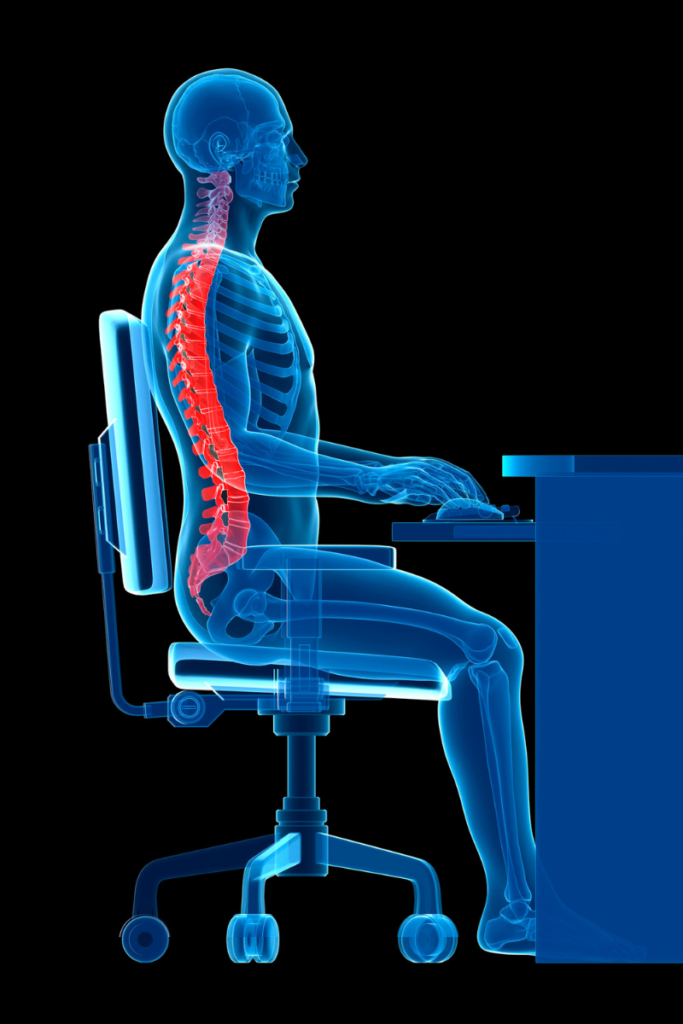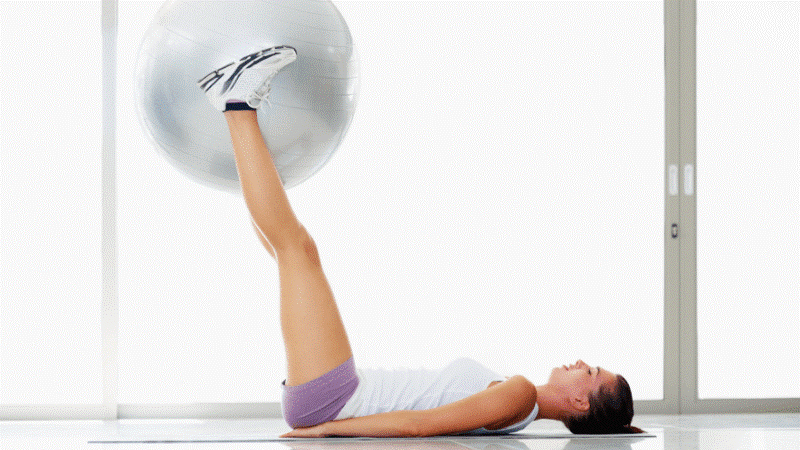Elevating feet is a simple and effective way to promote good health. Whether you’re standing for long periods, sitting for extended periods, or recovering from an injury, elevating your feet can help improve your overall health and well-being.
In this article, we will explore the amazing health benefits of elevating your feet and provide some tips on how to do it effectively.
Improved Blood Flow
Improved blood flow is essential for maintaining good health. When your blood flows efficiently, it helps to transport oxygen and nutrients to your organs and tissues while removing waste and toxins. This can improve the functioning of your body and boost your energy levels.
When you elevate your feet, gravity assists in the return of blood flow to the heart. This helps to reduce the accumulation of fluid in the lower legs, feet, and ankles, which can cause swelling and discomfort.
By reducing the accumulation of fluid, you can promote better circulation throughout the body, which can also help to reduce the risk of developing varicose veins and blood clots.
Improved blood flow can have many benefits for your health. For example, it can help to reduce the risk of heart disease, stroke, and other cardiovascular conditions. It can also improve the functioning of your immune system, which can help to protect you against infections and diseases. Improved blood flow can help to promote better mental health, by boosting your energy levels and reducing stress and anxiety.
Incorporating simple practices like elevating your feet into your daily routine can have a significant impact on your overall health and well-being. It’s essential to prioritize your health and take steps to promote better blood flow in your body.
Talk to your healthcare provider to determine the best practices for you and incorporate them into your daily routine. With a little effort, you can enjoy the many benefits of improved blood flow and live a healthier, happier life.
Reduced Inflammation

Reduced inflammation is a key benefit of elevating your feet, and it’s important for maintaining good health. Inflammation is a natural response by your body to protect itself against injury and infection, but when it becomes chronic, it can contribute to a range of health problems.
When you’re standing or sitting for extended periods, your feet can become swollen and inflamed. This is because blood and other fluids can accumulate in the lower legs, feet, and ankles, causing swelling and discomfort. By elevating your feet, you help to reduce the accumulation of fluid in these areas, which can also help to reduce inflammation.
Reducing inflammation can have many benefits for your health. It can help to reduce pain and discomfort, improve mobility, and promote better healing. Additionally, reducing inflammation can help reduce the risk of developing chronic conditions such as arthritis, heart disease, and diabetes.
It’s essential to consider additional recommendations, like regular exercise and increased movement, to promote better circulation and alleviate inflammation. Managing stress levels and maintaining a healthy diet can also help to reduce inflammation throughout the body.
Lower Pressure in the Veins

Elevating your feet provides the advantage of reducing vein pressure, which is crucial for maintaining optimal vascular health. Prolonged sitting or standing can make it more challenging for blood in your legs to flow back to the heart, leading to increased vein pressure and potential issues such as varicose veins, blood clots, and other complications.
By lifting your feet, you aid in decreasing vein pressure and enhancing circulation. This is because raising your feet enables gravity to facilitate blood flow back to the heart, alleviating pressure and stress on your leg veins. By minimizing pressure and supporting better circulation, you can lower the risk of developing varicose veins and other complications.
Lowering vein pressure can yield numerous health benefits, such as reducing pain and discomfort, increasing mobility, and promoting better healing. Lessening the pressure in the veins can help to decrease the risk of developing chronic conditions like deep vein thrombosis (DVT), a life-threatening type of blood clot.
Reduced Back Pain

Reducing back pain is another significant benefit of elevating your feet, and it’s crucial for maintaining good posture and spinal health. When you sit for long periods, your back can become strained, leading to pain and discomfort. This can cause spinal misalignment, muscle tension, and other complications.
By elevating your feet, you can help relieve the pressure on your back and promote better spinal alignment. This is because elevating your feet helps to distribute your weight more evenly, reducing the strain on your back and promoting better posture. By reducing pressure and promoting better alignment, you can reduce the risk of developing chronic back pain and other complications.
Reducing back pain can have many benefits for your health. It can help to improve mobility, reduce stress, and promote better sleep. Reducing back pain can help to reduce the risk of developing chronic conditions such as arthritis, which can cause long-term discomfort and disability.
Improved Posture

Proper body alignment and good posture play a crucial role in maintaining good health. Poor posture, whether while sitting or standing, can cause muscle tension, spinal misalignment, and other complications.
Elevating your feet is one of the many ways to improve your posture and promote better spinal alignment. By doing so, you reduce the pressure on your back and neck muscles, thus reducing the risk of chronic back pain and other complications.
Amalgamating practices like elevating your feet into your daily routine can be a simple and effective way to improve your posture. Regular exercise, maintaining good posture, and stretching are other key ways to promote better spinal health.
When you have good posture, you are more likely to breathe better, reduce stress, and have better circulation. In the long term, it can also help to reduce the risk of chronic conditions such as arthritis, which can cause long-term discomfort and disability.
Proper posture can also improve your productivity and mood while using your muscles more efficiently. By taking care of your posture and spinal alignment, you can enjoy the many benefits of good spinal health and live a healthier, happier life.
Tips For Elevating Feet:
Use a footstool, ottoman, or other elevated surface to prop up your feet.
Using a footstool, ottoman, or other elevated surface to prop up your feet is a simple and effective way to reduce swelling and promote better circulation in your legs and feet. By elevating your feet, you help to reduce the accumulation of fluids in your lower legs, feet, and ankles, which can cause discomfort and pain.
You can also use pillows to raise your feet to the level of your heart if you prefer.
Elevate your feet for 20-30 minutes at a time, several times a day.
Elevating your feet for 20-30 minutes at a time, several times a day can help to reduce swelling and improve circulation in your legs and feet. It’s important to ensure that the surface you use to elevate your feet is sturdy and secure.
You can also use an ice pack wrapped in a tea towel to ice your feet for up to 20 minutes at a time. This can further help to reduce swelling and ease any discomfort you may be experiencing. However, it’s important to wait at least 20 minutes between ice applications and always use a barrier between the ice and your bare skin to prevent injury.
Try to elevate your feet at the end of a long day or after extended periods of standing or sitting.
If you’re looking to incorporate elevating your feet into your daily routine, it can be helpful to try and do so at the end of a long day or after extended periods of standing or sitting.
Doing this can also help to reduce pressure in the veins in your legs, lower inflammation, and improve spinal alignment.
It’s important to note that while elevating your feet can be helpful, it’s not a substitute for regular exercise and a healthy lifestyle. Merging practices like elevating your feet into your daily routine can be a simple and effective way to promote better circulation and reduce swelling in your legs and feet. However, it’s also important to maintain a balanced diet, stay hydrated, and exercise regularly to support overall health and well-being.
If you have any concerns about swelling or other symptoms you may be experiencing, it’s important to consult with your healthcare provider to determine the underlying cause and appropriate treatment plan.
Having examined the potential health advantages of leg elevation, let us delve into specific health issues for which this practice can be beneficial.
Vein Conditions:
Factors such as extended periods of sitting, standing, or inactivity can increase the likelihood of developing vein conditions. Elevating the legs may help prevent or alleviate the following vein conditions:
Superficial thrombophlebitis:
A blood clot in a vein just beneath the skin leads to swelling and tenderness. Although some cases are low-risk, others may be linked to deep vein thrombosis.
Deep vein thrombosis (DVT):
A blood clot in a deep leg vein can obstruct blood flow, causing swelling or pain. This clot can also travel to the lungs, resulting in a pulmonary embolism.
Varicose veins:
It occurs when blood accumulates in the veins, leading to swollen, blue, and twisted veins just under the skin’s surface. Symptoms often worsen after extended periods of sitting or standing.
Chronic venous insufficiency (CVI):
A condition where blood cannot efficiently return to the heart, resulting in pooling in the legs. Symptoms may include pain, swelling, and varicose veins.
Injuries:
Leg elevation is a simple yet effective technique that can provide relief from pain, tenderness, and swelling associated with leg injuries. By elevating the injured leg, you can promote blood flow and reduce fluid buildup, which can help minimize inflammation and discomfort.
This method can be particularly helpful after surgery, as it not only helps to alleviate pain and swelling but also reduces the risk of blood clots, such as deep vein thrombosis (DVT) or thrombophlebitis. This is especially important in the case of hip or leg surgeries, where the risk of blood clot formation is higher.
To elevate your leg effectively, ensure that it is raised above the level of your heart. This can be achieved by using pillows, cushions, or a dedicated leg elevation device. Make sure the elevation is comfortable and maintain this position for as long as needed or as recommended by a healthcare professional.
Post-Surgery:
Elevating the legs after surgery can help reduce pain and swelling. Additionally, there is a risk of blood clots, such as DVT or thrombophlebitis, particularly after hip or leg surgery. Although gentle movement is essential, periodic leg elevation can help minimize the risk of blood clots.
During Pregnancy:
Lower extremity swelling is common during pregnancy due to increased fluid retention, hormonal changes, and pressure from the growing uterus. Leg elevation can help alleviate this swelling.
Cellulitis:
A skin infection often caused by bacteria, cellulitis can lead to tenderness, skin redness, and swelling. While antibiotics treat the infection, doctors may recommend elevating the affected limb above the heart to decrease swelling if cellulitis occurs on an arm or leg.
Lymphedema:
A progressive condition resulting from damage to the lymphatic system. Lymphedema can cause lymphatic fluid to accumulate in the body, leading to swelling in various body parts, including the legs. Leg elevation can help reduce swelling in the early stages of lymphedema but is ineffective in the later stages.
How to Elevate Feet
Find a comfortable place: Choose a comfortable and quiet spot where you can lie down with your back flat, either on a yoga mat, bed, or couch.
Use a pillow or cushion: Place a pillow, cushion, or folded blanket under your calves or ankles to support and elevate your legs. Make sure the support is comfortable and not causing any discomfort or pressure on your legs.
Position your legs: Gently lift your legs and rest them on the pillow or cushion. Adjust the height to a level that feels comfortable and allows you to relax. Your legs should be elevated higher than your heart to promote proper blood flow.
Relax and breathe: Close your eyes and take slow, deep breaths. Focus on relaxing your entire body, including your legs, feet, and toes. You can stay in this position for 10-15 minutes or as long as you feel comfortable.
Conclusion:
Elevating your feet is a simple and effective way to promote good health. It improves blood flow, reduces inflammation, lowers the pressure in the veins, reduces back pain, and improves posture. Elevating your feet can help to improve your overall health and well-being. Incorporating this simple practice into your daily routine can help you enjoy the many amazing health benefits of elevating your feet.
FREQUENTLY ASKED QUESTIONS
Q: How long should I elevate my feet to see the benefits?
A: You can start seeing benefits in as little as 20-30 minutes of elevating your feet at a time, several times a day.
Q: How high should I elevate my feet?
A: Ideally, you should elevate your feet above the level of your heart to maximize the benefits. You can use a footstool, ottoman, or other elevated surface to prop up your feet.
Q: Can elevating my feet help with swollen ankles and feet?
A: Yes, elevating your feet can help to reduce swelling in your ankles and feet by promoting better circulation. Try elevating your feet at the end of a long day or after extended periods of standing or sitting.
Q: What are some other benefits of elevating feet?
A: Elevating your feet can also help to reduce inflammation, lower pressure in the veins in your legs, and improve posture. It can also help to reduce back pain and promote better spinal alignment.
Q: Can anyone elevate their feet, or are there any restrictions?
A: Elevating your feet is generally safe for most people. You should always consult with your doctor first if you have any underlying health conditions or concerns. If you have any discomfort or pain while elevating your feet, stop immediately and consult with your doctor.
I hope that answers your questions about the amazing health benefits of elevating feet!

